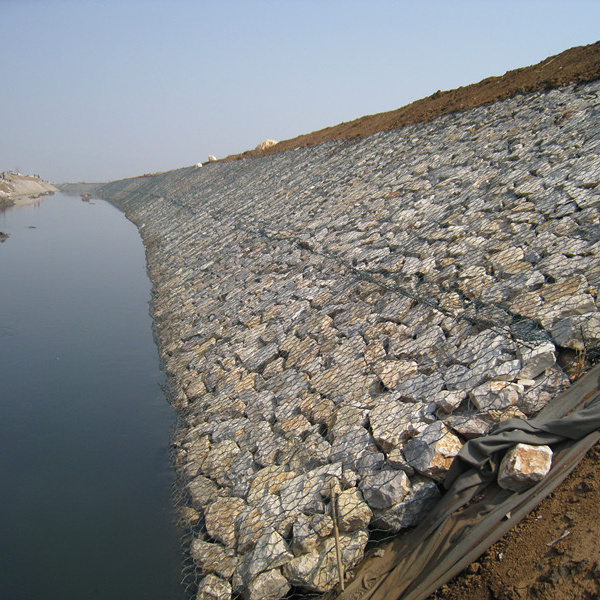សីហា . 21, 2024 21:32 Back to list
Optimal Stone Cage Net Solutions for Enhanced Durability and Performance in Construction
The Best Stone Cage Net A Comprehensive Guide
In recent years, the use of stone cage nets, commonly known as gabions, has gained significant traction in various construction and landscaping projects. These structures, built from large wire mesh cages filled with stones, offer impressive durability and versatility. This article will explore the benefits, applications, and best practices for using stone cage nets, highlighting why they are regarded as one of the best solutions for various engineering challenges.
What are Stone Cage Nets?
Stone cage nets are engineered structures made of wire mesh, often galvanized or coated to resist corrosion. These cages are filled with natural stones to create a formidable barrier that can withstand the elements. The combination of wire and stone provides both flexibility and strength, making gabions an excellent choice for various applications, from erosion control to aesthetic landscaping.
Benefits of Using Stone Cage Nets
1. Durability and Longevity One of the most significant advantages of stone cage nets is their durability. The robust materials used in their construction ensure that they can withstand harsh weather conditions, including heavy rain, snow, and extreme temperatures. Unlike traditional materials, stone cages do not deteriorate over time, providing long-lasting solutions for both engineering and aesthetic needs.
2. Erosion Control Gabions are widely used for erosion control along riverbanks, hillsides, and coastal areas. By using stone cage nets, engineers can stabilize soil, prevent landslides, and protect infrastructure from the damaging effects of water flow. The porous nature of gabions allows water to flow through while trapping sediment, effectively reducing erosion over time.
3. Aesthetic Appeal Beyond their functional benefits, stone cage nets can enhance the visual appeal of landscape designs. They can be constructed in various shapes and sizes, allowing for creative landscaping solutions. These structures can be integrated into gardens, parks, and urban settings to create visually striking features that blend well with the natural environment.
4. Eco-Friendly Using natural stones for filling gabions makes them an environmentally friendly option. The materials are often sourced locally, reducing the carbon footprint associated with transportation. Moreover, gabions encourage vegetation growth, which can further enhance biodiversity and contribute positively to the ecosystem.
best stone cage net

5. Cost-Effectiveness In many cases, stone cage nets are more cost-effective than traditional retaining wall systems. They require less labor for installation, and their long lifespan means that maintenance costs are minimized. This makes gabions an attractive option for budget-conscious individuals and organizations.
Applications of Stone Cage Nets
Stone cage nets can be used in a variety of applications, including
- Retaining walls Providing support for soil and preventing erosion. - Riverbank stabilization Protecting banks from erosion and flooding. - Noise barriers Reducing sound pollution in urban areas. - Decorative elements Creating pathways, garden borders, and seating areas in landscaping projects.
Best Practices for Installation
To ensure the effectiveness of stone cage nets, several best practices should be followed during installation
1. Site Assessment Conduct a thorough assessment of the site to determine the appropriate type and size of the gabion needed. 2. Proper Drainage Ensure that water drainage is adequately planned to prevent water buildup behind the walls, which could compromise their stability. 3. Quality Materials Use high-quality, corrosion-resistant wire mesh and well-graded rock to fill the cages for optimal performance. 4. Regular Maintenance Periodic inspections and maintenance, such as replacing damaged wire or stones, will extend the lifespan of the gabion structures.
Conclusion
The best stone cage nets, or gabions, offer an effective and aesthetically pleasing solution to a variety of engineering challenges. With their durability, versatility, and environmental benefits, they stand out as a top choice for erosion control, landscaping, and construction projects. Embracing this innovative approach not only enhances structural integrity but also contributes to sustainable development practices.
-
Wire Mesh Thickness Impact on Gabion Wall Load Bearing
NewsAug.12,2025
-
Ultimate Guide to Hexagonal Gabion Box
NewsAug.12,2025
-
Types of Rocks for Gabion Baskets Durability and Aesthetics
NewsAug.12,2025
-
Standard Gabion Box Sizes and Their Industrial Applications
NewsAug.12,2025
-
Easy Guide to Building Garden Gabion Cages at Home
NewsAug.12,2025
-
Drainage Solutions for Gabion Mesh Structures
NewsAug.12,2025
-
Visualizing Gabion 3D Integration in Urban Landscapes with Rendering
NewsJul.23,2025






